



In digital marketing, acquiring leads is equivalent to mining gold. The process is complex and requires precision, but the rewards are considerable when completed perfectly.
A Forbes study shows that 58% of business leaders say lead generation is a significant challenge for their business.
A vital component of this process is the lead generation form, which, when properly developed, can turn casual website visitors into prospective customers. Given the crowded marketplace, successfully engaging and converting your audience through these forms is often critical to distinguishing your brand.
Understanding Lead Generation Forms
A lead generation form acts as a link between your organization and potential customers. These forms are designed to collect information ranging from basic contact information to more precise data corresponding to your marketing objectives.
Whether for newsletter subscriptions, service inquiries, or downloadable content offers, the primary benefit of these forms is their capacity to screen and secure genuine interest.
Salesforce, a customer relationship management (CRM) giant, specializes in leveraging lead generation forms to segment prospects based on industry, organization size, and interest, allowing for more tailored contact.
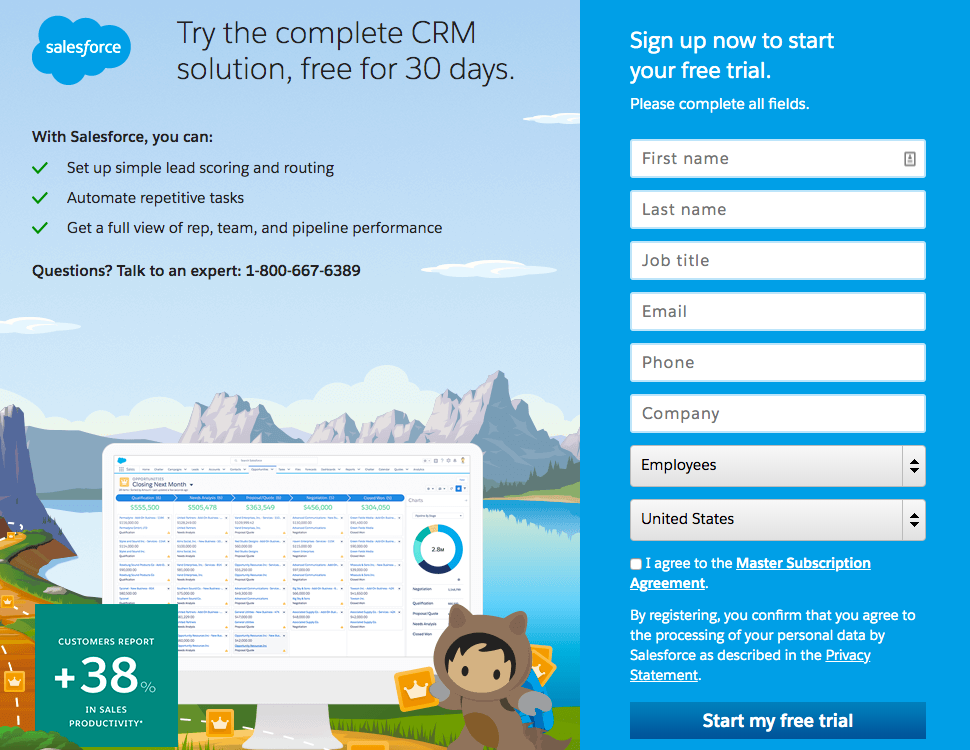
Dropbox takes a similar approach, providing free storage space in exchange for basic user information, a strategy that propelled its user base in its early phases.

A Marketo study revealed a fascinating insight: lowering form fields from ten to six can increase conversion rates by 15%, emphasizing the value of form simplicity and focus.
Planning Your Lead Generation Strategy
The strategic planning for your lead generation form should begin with a thorough grasp of your company’s goals and target audience. This planning stage is crucial for determining the material useful to your organization and relevant to your target audience’s expectations and needs.
For example, B2B companies like HubSpot provide extensive tools such as manuals and toolkits in exchange for granular information, allowing for more focused marketing campaigns.

This contrasts with B2C examples such as Spotify, which streamlines its signup process to take basic information, aiming for a quick conversion and immediate interaction with its product.
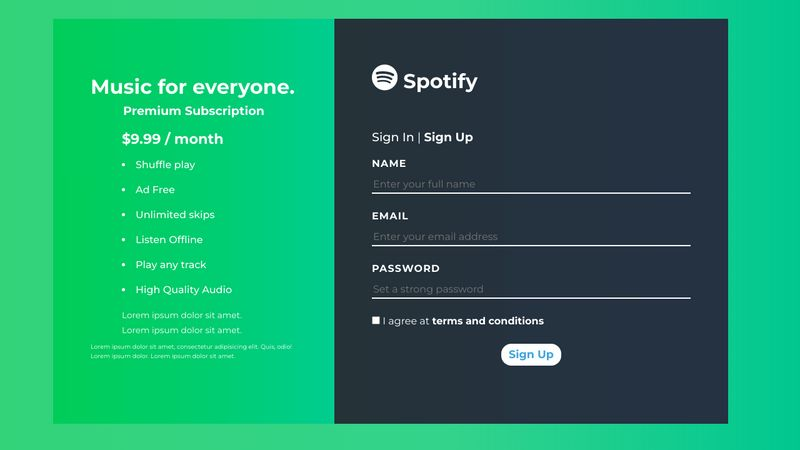
Segmentation is essential in this context. You can adapt the form to match diverse needs and interests by identifying different segments of your target audience. Adobe Creative Cloud displays a different form to individuals, businesses, students, and teachers.
Designing Your Lead Generation Form
Designing an efficient lead generation form requires a careful balance of visual appeal and functional simplicity. The aim is to make the form enticing and straightforward to fill while ensuring that it corresponds with your strategic goals.
Google Forms demonstrates this balance effectively, providing a user-friendly design that can be adjusted to meet various demands while prioritizing the user’s experience.
On the other hand, Airbnb personalizes the experience by gradually demanding more information as users continue through the booking process, which minimizes initial friction and increases completion rates.
Key design concepts include reducing the number of fields, employing clear and compelling calls-to-action (CTAs), and ensuring the form is visibly appealing and consistent with the brand’s style.

Mobile optimization is another crucial factor, considering the growing popularity of mobile browsing. Instagram’s signup form is an excellent example of mobile-first design, allowing for rapid and easy registration via mobile devices.
Here are some other tips for designing the lead generation form:
- Different colors are associated with various emotions. Try changing the background color for specific campaigns to see if the form connects better with the audience.
- The headline is the first thing prospects will see on the form. Specific colors could be better at attracting attention.
- Experiment with adding an image or video to the form. Sometimes, the right visual attracts people to an offer.
- Think about your button call-to-action and whether it will encourage people to click.
- Fonts (colors, sizes, and weights) can make a difference. Ensure the fonts align with your brand image.
Integrating the Form on Your Website
The technical integration of your lead generation form varies considerably based on the CMS (Content Management System) that your website relies on. WordPress users, for example, have access to a myriad of plugins, such as Contact Form 7 and Gravity Forms, which make the process easier. These tools not only make it easier to create and integrate forms, but they also provide lead tracking and management capabilities.
Your form must conform to data protection requirements, such as the GDPR in Europe. This compliance fosters trust and protects your organization from potential legal concerns. A short statement like the example below may be sufficient, or you might require opt-in boxes if you intend to add users to a mailing list or something similar.
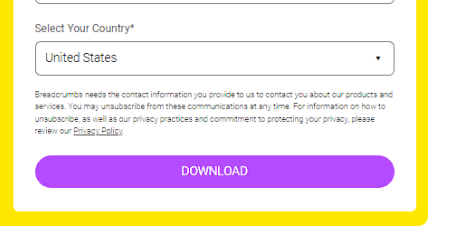
Testing and Optimizing Your Form
After integration, the attention moves to testing and optimization, which are key phases for boosting form performance and conversion rates over time. Using A/B testing to compare different versions of your form can disclose information about user preferences and behavior, driving incremental improvements.

The example above uses a different call to action and subject line to understand what prospects engage best. Cracku, a company that helps students prepare for exams, increased conversion 300% by adding a countdown timer to its lead generation form.
There are several elements of the form you can test:
- Change background colors
- Changing fonts and font colors
- Trying a different image or adding another image
- Amending the font weights and sizes
- Subject line and content wording
- The wording of the privacy message
- Button colors and CTAs
- Including special effects like a timer to add urgency
You can try the above through A/B testing, as what works will depend on your audience and campaign.
Advanced Strategies for Lead Generation Forms
To improve your lead generation efforts, consider using progressive profiling—a strategy that gradually captures more information about a lead with each encounter without overwhelming them initially.
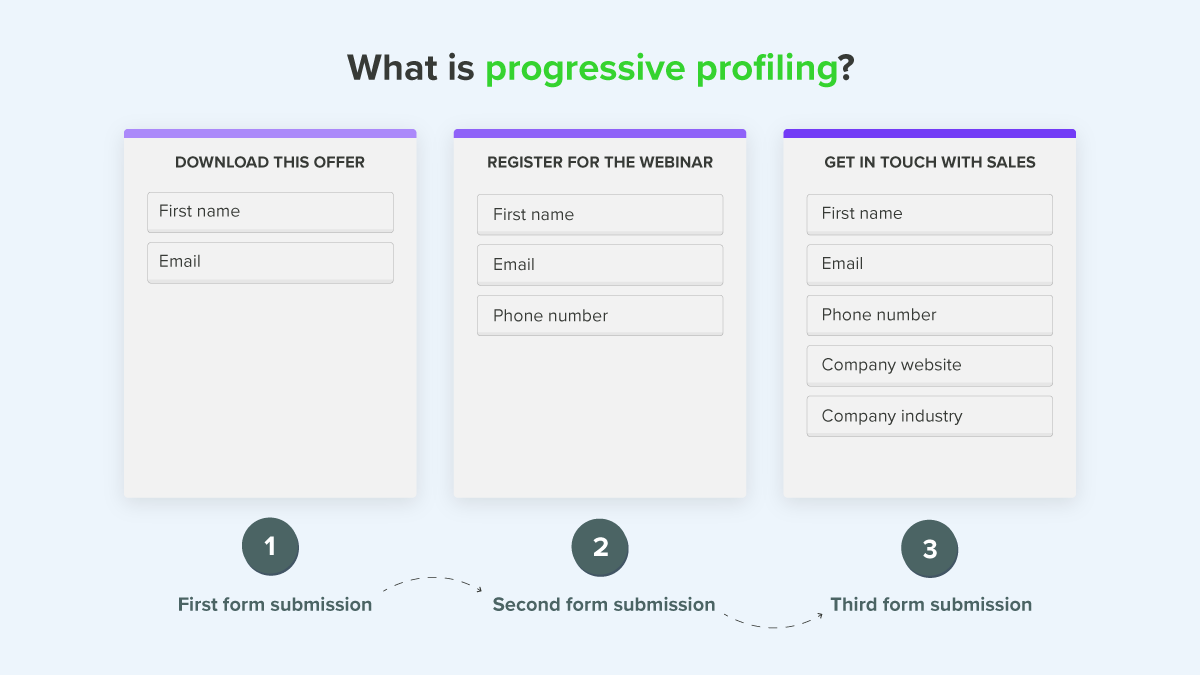
Gamification is another creative method in which the completion of a form is combined with a game-like experience. Nike’s ‘Reactland’ ad, in which customers could try shoes in a virtual setting, is a powerful example.

Users were more willing to share personal information in exchange for this one-of-a-kind experience, demonstrating gamification’s ability to increase engagement and information gathering. Once experiencing the game, 48% of players bought the shoes.
Advancements in technology provide new opportunities to optimize lead generation forms. Artificial intelligence (AI) can be used to tailor form fields and offers depending on a user’s browsing history or demographic information. Chatbots, such as those used by Drift (below), can engage visitors in a conversation, guiding them to provide information in a more participatory and less intrusive way.
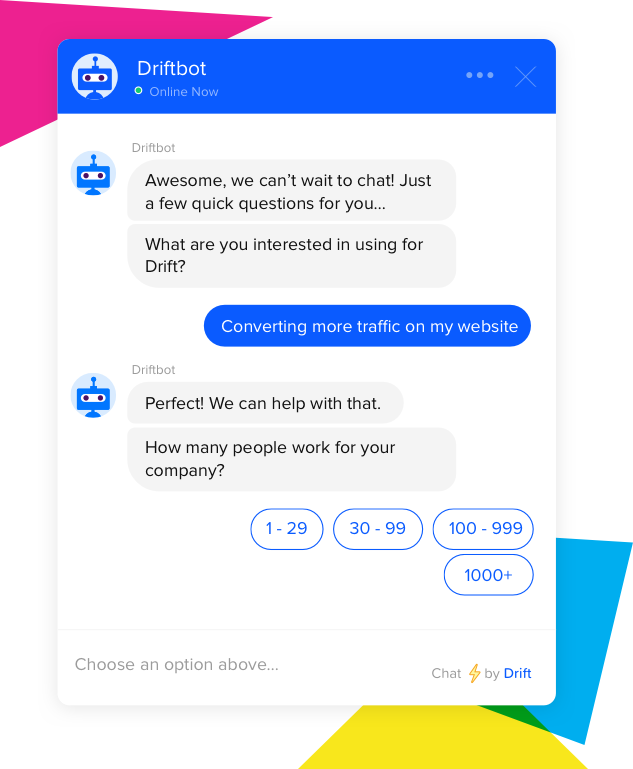
Analytics tools are essential for analyzing how users interact with your form. Heat mapping tools, such as Crazy Egg, provide visual statistics on how users interact with your form, indicating regions that draw attention and locations that prompt users to abandon.
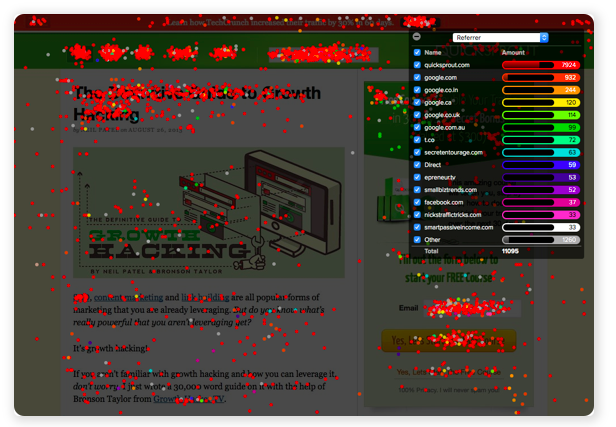
Ensuring your lead generation form works fundamentally before diving into the newer technology is best. Still, you can take your creations to the next level through AI and gamification.
Summary
Creating an efficient lead generation form is a multidimensional task that involves strategic planning, careful design, and ongoing optimization. Businesses can create forms that capture leads while fostering meaningful connections with their audience by drawing inspiration from successful brands and following best practices.
